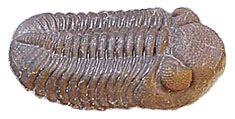By George E. Beetham Jr.
Adventures on Earth column for the Nov. 10 edition of The Review
We are speeding our way through another calendar year. We are done with Daylight Saving Time. Thanksgiving is two weeks away, and winter is less than six weeks away. Autumn is half gone.
The leaves are mostly gone from the trees. What remains will be gone shortly. Hurricane season ends at the end of the month, and an active season it has been.
We’ve had a frost, at least in outlying areas if not the city proper.
In short, the natural world, for all intents, is into winter.
I can remember a November trip to my grandparents’ farm in Bucks County when I was a child. The farm was on a hill, and the wind howled over that hill. It was cold, colder than I had expected.
We were getting the hard corn ready for the mill. We called the hard corn horse corn. It was not the sweet corn that we eat, but corn raised specifically to be milled into feed for the herd of dairy cows.
We would feed the ears of hard corn into a mechanical sheller, driven by a belt off the tractor, that would strip the kernels of corn off the cob.
The kernels would tumble into a burlap sack and the cobs would be spit out the back into bushel baskets.
There were many uses for the cobs. My grandfather would use them as handles for files and knives that served several functions on the farm. They could also be broken up and spread as mulch on the fields.
For the kids, they were perfect for chucking at one another, and corn cob fights were not uncommon.
We worked at the job in spite of how cold it felt. I was not adequately clothed for that cold, and I remember being very uncomfortable and even more unhappy. Still, we worked until the job was finished and we retired to the farm house for hot chocolate with marshmallows and the warmth of a wood stove in the kitchen.
Ever since that day, the first really cold snap of autumn takes me right back to that day in the corn crib shelling the corn.
In the days when agriculture was a staple of our economy, a lot of people marked the passage of a year by what took place on a farm. Farm chores are cyclical, just like weather, and farmers spend the harvest season getting ready for winter.
During the growing season farmers plant, cultivate, weed, and nurture their crops. When they are ready for harvest, that becomes the next step in the progression of a farm year.
By late autumn, there are only a few jobs left, things set aside when more pressing business took precedence.
Over the winter it was necessary to feed, water, and milk the cows, shovel out the manure, and put down fresh straw. The cows chewed their cud and produced milk, along with the manure.
Cold weather, snow, ice, and howling winds made a farmer’s chores all the harder during the cold months, not unlike the challenges posed for city living.
If farming life was hard, it was also rewarding. As part of the harvest, food was put up, either canned in Mason jars or frozen. Thus the produce was available all year long in one form or another.
Those days are long gone, relegated to memory and dreams. But a brisk wind out of the northwest brings it all back in seconds – those days when late autumn made the chores a lot harder.

No comments:
Post a Comment